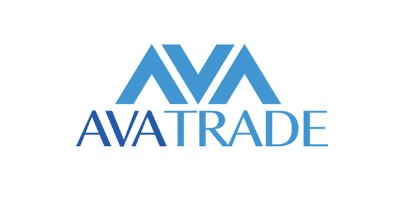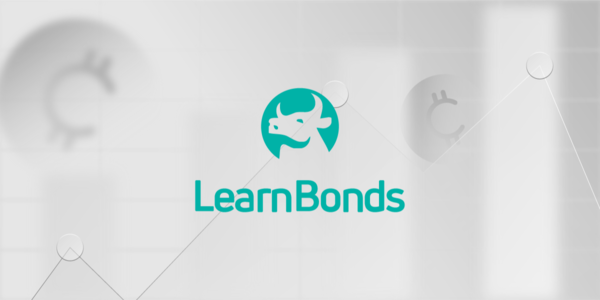Cryptocurrency Trading in the Philippines – A Beginner’s Guide
If you’re based in the Philippines and you want to and trade cryptocurrencies like Bitcoin and Ethereum, the process has never been easier. You simply need to find a cryptocurrency broker, deposit some funds, and then choose which pairs you wish to trade. However, how do you know which cryptocurrency trading platform is best for you?
In this guide to cryptocurrency trading for beginners, we explain the ins and outs of how cryptocurrency trading in the Philippines works. This includes a full overview of how the trading space operates, how you can find a suitable cryptocurrency broker, and what you need to do to get started today!
-
- What Regulations are in Place for Trading Cryptocurrency in the Philippines?
- What Risks are Involved with Cryptocurrency Trading in the Philippines?
- How to Earn from Cryptocurrency Trading
- Is Cryptocurrency Available in the Philippines?
- What Analysis Techniques can be used for Cryptocurrency Trading?
-
- What Regulations are in Place for Trading Cryptocurrency in the Philippines?
- What Risks are Involved with Cryptocurrency Trading in the Philippines?
- How to Earn from Cryptocurrency Trading
- Is Cryptocurrency Available in the Philippines?
- What Analysis Techniques can be used for Cryptocurrency Trading?
How to Trade Cryptocurrencies in 3 Quick Steps:
Step 1: Choose a Cryptocurrency Trading Platform
If you want to trade cryptocurrencies from the comfort of your home, you will need to find an online broker that meets your needs. The good news is that there are now lots of cryptocurrency trading platforms that accept investors from the Philippines. With that said, you need to look at a range of metrics before opening up, such as regulation, fees, commissions, tradable assets, and customer support.
To help you along the way, below you will find our three top-rated cryptocurrency brokers in the Philippines.
1. Plus500 – Low Cost Crypto CFD Broker
Founded in 2008, Plus500 is a UK-based broker that is considered one of the best cryptocurrency CFD brokers. With no commission and very tight spreads, Plus500 has made its name as one of the most affordable platforms around.
Plus500 offers seven cryptocurrencies to trade as CFDs with 1:2 leverage. One unique aspect of this broker is that it also allows you to trade an Bitcoin-Ethereum blend that provides exposure to both of these leading cryptocurrencies.
Trading takes place on Plus500’s own proprietary platform, which features basic charting tools, price alerts and an economic calendar. The platform is available on desktop and as a mobile app, though advanced traders may find it slightly lacking in the tools department.
You can begin trading on Plus500 with a £100 (6,268 peso) minimum deposit, and there’s a range of payment methods on offer, including PayPal. You can also try the platform for free via the demo account. With licenses from leading bodies like the FCA, you can trade cryptocurrencies in confidence on Plus500.
- No commission & tight spreads
- Bitcoin/Ethereum Blend
- Regulated by multiple agencies
- Minimal advanced research tools
80.5% of retail investor accounts lose money when trading CFDs with this provider.2. AvaTrade – Trade Cryptocurrencies with Low Spreads
AvaTrade is a well-established broker that is licensed in many jurisdictions, including the UK, Australia and Canada. This means it’s a safe and trustworthy platform for cryptocurrency trading in the Philippines.
This broker is particularly notable due to its very competitive pricing. Cryptocurrency trading is available with spreads as low as 0.45%, and AvaTrade also recently slashed its crypto spreads by 50%, so it’s a very affordable broker. AvaTrade allows users to trade crypto CFDs with 1:2 leverage.
Getting started on AvaTrade requires an initial minimum deposit $100 (5012 peso). This platform doesn’t accept PayPal, but it does offer Neteller and Skrill. There is a free demo account that can help you practice Bitcoin trading and test your strategies before risking your money.
There are a range of trading platforms to choose from, including AvaTrade’s own proprietary platform, AvaTradeAct, along with MetaTrader 4 (MT4) and MetaTrader 5 (MT5). These offer a range of advanced trading tools, as well as other features like trading robots.
- Tight crypto spreads
- Multiple trading platforms
- Swap-free, Muslim-friendly account
- Slow withdrawals
There is no guarantee you will make money with this provider.3. IG – CFD Broker with Crypto 10 Index
IG is one of the best-established brokers in the business, having been founded all the way back in 1974. Today, IG is a leading cryptocurrency CFD broker and boasts hundreds of thousands of users. You can trade Bitcoin and seven other cryptocurrencies on this platform.
Like the other top brokers on this list, there’s no commission for cryptocurrency trading on IG, and the spreads start from just 1 pip. One of the most attractive aspects of IG’s crypto offering is that you can trade a custom Crypto 10 index that tracks the performance of the 10 top coins by market capitalization
In terms of trading platforms, IG users can trade on the platform’s own proprietary platform, which is very user-friendly, customizable and comes with a range of useful tools, including charting and signals. Alternatively, you can trade on IG via MetaTrader 4 and ProRealTime.
The minimum deposit on IG is slightly on the high side, standing at $300 (15034 peso). You can deposit via credit/debit cards and PayPal. This broker is regulated by a wide range of respected authorities and is publicly traded on the FTSE 250, so it’s a very safe and reputable crypto trading platform.
- Lots of trading tools
- Competitive spreads
- Unique crypto 10 index
- Inactivity fees
There is no guarantee you will make money with this provider.4. Coins.ph – Philippines-Based Crypto Trading Platform
With over 5 million customers, Coins.ph is the biggest cryptocurrency trading platform that’s based in the Philippines. Unlike the other platforms on this list, Coins.ph is a cryptocurrency exchange rather than a broker. One of the best things is that it allows you to convert Philippines peso directly into Bitcoin and other cryptocurrencies.
It is among the few virtual currency exchanges licensed by the Bangko Sentral ng Pilipinas (BSP). In addition to trading cryptocurrencies, you can also use it to access services such as mobile airtime, international remittances, bill payments and shopping at over 63,000 merchants that accept digital currency across the country.
The process of creating an account using the web browser or mobile app is straightforward. After creating an account, you are required to proceed with its KYC process. This means you need to verify your identity by submitting the necessary documents such as your government issued-IDs.
Cash-in fees will depend on the payment service you use. For instance, you won’t incur any charges if you use 7-Eleven, GCash, M’Lhuillier and Cebuana but there is a rebate fee when you use UnionBank. Making a withdrawal in Metro Manila is free, but in other regions, the cost will depend on the payment provider you use.
Additionally, the transfer threshold depends on your level of account verification. If you verify both your identity and address, you can cash in and out as much as you want. Coins.ph features two-factor authentication for improved security.
- Variety of payment methods
- Simple account creation process
- Licensed by the BSP
- Slow verification process
There is no guarantee you will make money with this provider.Step 2: Learn How the Cryptocurrency Market Works in the Philippines
So now that you have a list of brokers to choose from, we now need to discuss the ins and outs of how the cryptocurrency markets actually work in the Philippines. After all, you will be trading digital coins with real-world money, so it’s crucial that you have a firm grasp of how things work.
What is Cryptocurrency?
Let’s start with the basics – a cryptocurrency is a digital token or coin that allows people to send and receive money without needing a third-party. The de-facto cryptocurrency of choice, not only in the Philippines but globally, is Bitcoin.
This digital coin now has a multi-billion dollar market capitalization, meaning that you can purchase Bitcoin with ease. The underlying technology that supports Bitcoin is called the ‘blockchain’.
In its most basic form, the blockchain operates in a decentralized manner. This means that the network is not controlled by a single person or organization, nor is it backed by a central bank or government. Instead, transactions are confirmed by ‘miners’.
Furthermore, all cryptocurrency transactions remain on the public blockchain indefinitely, meaning that the system is transparent.
What is Cryptocurrency Trading?
In terms of cryptocurrency ‘trading’, this is the process of buying and selling digital coins with the view of making a profit from ever-changing exchange rates.
At the forefront of this is BTC/USD, which is the exchange rate between Bitcoin and the US dollar. Not only can you trade Bitcoin against real-world currencies, but brokers also give you access to crypto-cross pairs. This means that you will be trading the exchange rate between two different cryptocurrencies.
Let’s take a quick look at how a cryptocurrency trade works in practice.
- You want to trade Bitcoin against the US dollar, meaning the pair in question in BTC/USD
- The pair is currently priced at $9,890
- You think that Bitcoin will smash through the physiological zone of $10,000, so you place a buy order
- The value of your buy order is 20,000 PHP
- A few days later, BTC does indeed break the $10,000 resistance line, and BTC/USD is now priced at $10,400
- You decide to cash in your gains of 5.1% by placing a sell order
- On a stake of 20,000 PHP, your total profit is 1,020 PHP
As you can see from the example above, your cryptocurrency trade worked in exactly the same way as a traditional forex position. That is to say, the objective was to determine which way the exchange rate of BTC/USD would move. If you think the price will increase you place a buy order, and a sell order if you think the opposite.
What Regulations are in Place for Trading Cryptocurrency in the Philippines?
First and foremost, cryptocurrencies like Bitcoin, Ethereum, Ripple and many others are perfectly legal in the Philippines That is to say, you are free to buy, sell, and trade cryptocurrencies as you see fit. In terms of domestic Bitcoin exchanges, entities are regulated by the Central Bank of the Philippines.
With that being said, this offers little in the form of consumer protections, which is why you are advised to use a broker that is licensed with a tier-one body. This includes the likes of the FCA (UK), ASIC (Australia) and CySEC (Cyprus). For those unaware, tier-one regulators demand that cryptocurrency brokers keep client funds in segregated bank accounts.
In theory, this means that your money will be ringfenced in the event the broker no longer exists. Other regulatory safeguards are also in place, such as a requirement for all traders to identify themselves when they first register an account.
This has the desired impact of keeping crime away from cryptocurrency brokers. By using a platform that is regulated by a tier-one body, you will have the remit to fund your account with a Philippines debit/credit card, bank account, or e-wallet.
What Risks are Involved with Cryptocurrency Trading in the Philippines?
It is crucial that you make some considerations about the risks of cryptocurrency trading in the Philippines. At the forefront of this is the reality that you can lose money. This is just the nature of the online investment space. In other words, the cryptocurrency markets will at some point go against you, so it’s important that you have a number of risk management strategies in place. At the very least this should include sensible stop-losses on all trades.
On top of trading risks, you then need to consider how safe your chosen cryptocurrency broker or exchange is. As we mentioned in the section above, you are best advised to stick with platforms that hold at least one tier-one license. Even then, there is no guarantee that your money is 100% safe. As such, spend some time exploring the credentials of your chosen cryptocurrency trading platform.
Finally, it is also worth considering the risks of updated domestic legislation in the Philippines. While the country has thus far embraced cryptocurrencies and blockchain technology, a regime change could change this overnight. As such, keep an eye on crypto-specific regulatory developments in the Philippines.
How to Earn from Cryptocurrency Trading
Your ability to earn money from Bitcoin trading and the trading of other cryptocurrencies will ultimately depend on the type of strategy that you decide to employ. For example, some traders in the Philippines will take a traditional ‘buy and hold’ strategy. This means that they will purchase cryptocurrencies like Bitcoin, and then hold on to the coins for a number of years. Then, the trader will hope to sell the Bitcoin back to PHP at a much higher price.
Alternatively, some investors in the Philippines will take a short-term approach to cryptocurrency trading. That is to say, they will look to buy and sell both fiat-to-crypto and crypto-to-crypto pairs throughout the day, with the view of making small, but frequent gains. This is more suited for those of you that want to trade on a full-time basis.
With that being said, both investment streams have one thing in common – all profits are in the form of capital gains. This means that you will make money if you sell the cryptocurrency pair for more than you paid. Crucially, unlike traditional assets like stocks, mutual funds, ETFs, and bonds, cryptocurrencies do not generate income. Instead, you are merely speculating on the future price of the cryptocurrency in question.
Is Cryptocurrency Available in the Philippines?
In a nutshell, yes, cryptocurrency is available in the Philippines. There are a number of domestic exchanges that allow you to buy Bitcoin, sell it and trade other cryptocurrencies at the click of a button. In fact, it is even possible to purchase and sell Bitcoin in the Philippines via an ATM. You simply need to insert PHP into the machine, and in return, the coins will be transferred to your Bitcoin wallet.
However, if you are planning to trade cryptocurrencies, rather than just buy and hold them, you are best advised to use a regulated broker that is licensed by the likes of the FCA or ASIC. In doing so, you stand the best chance possible of being able to trade in a safe and secure online environment. Moreover, traditional brokers give you access to thousands of other asset classes, such as forex trading, so you can offset the higher-than-average risks of cryptocurrencies with other investments.
What Analysis Techniques can be used for Cryptocurrency Trading?
Unless you are completely new to the world of cryptocurrency trading, you will know first-hand that research is super-important. In fact, if you plan to trade cryptocurrencies in the Philippines without first doing some homework on your chosen pair, you may as well flip a coin. This is typically split into two main research streams – fundamental analysis and technical analysis.
- Fundamental Analysis
In its most basic form, fundamental analysis will see the trader keep tabs on key industry developments that could impact the price of a cryptocurrency. For example, let’s suppose that regulators in the United States approve an Ethereum futures market on the CME.
This would be a major news event for ETH, as it would effectively legitimate the digital currency as a fully-fledged investment vehicle. In turn, fundamental analysis would dictate that the price of ETH is likely to increase against fiat currencies like the US dollar or British pound.
All in all, fundamental analysis is pretty straight forward for newbie cryptocurrency investors. This is because it is simple to ascertain whether the news is positive or negative for the digital coin in question!
- Technical Analysis
In the case of technical analysis, this forms the bread and butter for all seasoned traders. The research process will see the trader perform in-depth analysis of chart patterns. The trader will look at historical Bitcoin price trends and how these trends relate to the current price of the cryptocurrency.
Then, the trader will determine which way the markets are likely to go, as per the technical analysis they have performed. With more than 100+ chart reading indicators available to traders, technical analysis can take many, many months to master.
Step 3: Choose A Cryptocurrency Trading Strategy
On top of having a firm grasp of how fundamental and technical analysis works, you also need to spend some time thinking about the type of cryptocurrency trading strategies that you wish to employ. There is no one-size-fits-all strategy in this respect, as it all depends on what your long-term trading goals look like.
Nevertheless, below we have listed some of the main cryptocurrency trading strategies utilized by both newbie and seasoned investors.
Scalping
Scalping is a low-risk strategy that will see the cryptocurrency trader capitalize on short-term ‘consolidation’ trends. For those unaware, a consolidation of a cryptocurrency pair means that it has been trading within a ‘tight’ range for a number of days (and sometimes weeks).
In layman’s terms, this means that the markets are still undecided on which way the cryptocurrency will move in the medium-term. Until the markets make a decision, the cryptocurrency will trade between two ranges.
For example:
- Let’s suppose that you are trading ETH/USD
- The pair has been trading between $180 and $190 for six days
- This means that ETH/USD has not gone lower than $180, and it hasn’t gone higher than $190
- This is highly conducive for a scalping trader, as they will profit every time the pair moves between the two ranges
- For example, the scalper might place a buy order at $181, and then close the position at $189
- Then, they will do the exact opposite with the view of catching the lower end of the range
All in all, scalping is low-risk because the trader will always have sensible exit positions in place to counter the threat of a ‘breakout’.
Swing Trading
Swing trading will see the cryptocurrency trader hold on to a position for a number of days or weeks. In this sense, it’s more of a short-to-medium trading strategy. For example, let’s say that the investor likes the look of XRP/USD, and they think it is due to go on an upward trajectory.
As such, they decide to place a buy order. In the coming weeks, XRP/USD is 15% up. However, the trader thinks the trend is due to come to an end so they decide to exit their position. In turn, they might then decide to place a sell order on XRP/USD with the view of catching the downward trend!
Holding
Holding, otherwise referred to as a ‘buy and hold’ strategy, is more aligned with ‘investing’ than trading. This is because you will simply buy a digital coin like Bitcoin, store it in a private wallet, and then hope to sell it a number of years later at a much higher price.
For example, let’s suppose that you purchased Bitcoin in January 2017 when it was priced at just $1,000. A shrewd investor would have held on to their investment until Bitcoin’s peak in December of the same year. In doing so, they would have made a juicy profit of near-on 2,000%!
Crucially, those that engage with a holding strategy are not too concerned with short-term trends, as they understand cryptocurrencies will always go up and down in the markets. Instead, they prefer to ride the waves out by focusing on the long-term game.
Bitcoin Breakout
A Bitcoin ‘breakout’ leads on from our section on scalping. In the case of scaling, this is where a trader looks to capitalize on a short-term consolidation period within a tight pricing range. Eventually, the cryptocurrency will ‘break out’ of this tight range.
When it does, the likelihood is that the value of Bitcoin will move in a parabolic manner – meaning a sharp increase or decrease is typical. A Bitcoin breakout strategy will see the trader cover both eventualities so that they profit regardless of which way the markets move!
Step 4: Open a Cryptocurrency Trade
Now that you have reviewed the best cryptocurrency trading platforms in the Philippines and have an understanding of how the market works, you can open an account and begin trading!
Select one of the brokers reviewed above and away you go.
Pros and Cons of Cryptocurrency Trading
Pros
- Enter a financial marketplace that is still in its infancy
- Dozens of cryptocurrency pairs to trade
- Markets operate on a 24/7 basis
- Trade fiat-to-crypto or crypto-to-crypto
- Lots of regulated cryptocurrency brokers now accept Filippino traders
- Easily deposit and withdraw funds with a local payment method
Cons
- Cryptocurrencies are highly speculative
- Digital coins do not yield income
- You could lose money
Conclusion
In summary, it has never been easier to buy, sell, and trade cryptocurrencies in the Philippines. Whether you are looking to trade cryptocurrencies against the US dollar or other coins like EOS and Ethereum, you can do this at the click of a button from the comfort of your home. Brokers which are regulated by tier-one bodies the FCA and ASIC, now accept traders from the Philippines.
Not only does this mean that you can trade digital currencies in a safe and secure environment, but you can get money into and out of the platform with ease. All in all, just make sure that you understand that cryptocurrencies operate in a highly speculative industry and there is no guarantee that you will make money in the long run.
FAQs
Is cryptocurrency trading legal in the Philippines?
Crypto trading is legal in the Philippines, and the country’s BSP has already licensed several crypto exchange companies.
Is crypto trading profitable?
Trading cryptocurrencies is potentially profitable since it has high volatility. Traders exploit this to make profits from their trades. However, there is always the risk thatyou will lose money
How does cryptocurrency trading work?
Crypto trading involves the exchange of one cryptocurrency for another according to market prices. It also involves the exchange of fiat money to crypto assets.
When is the cryptocurrency trrading market open?
The crypto market can be accessed at any time of the day as it is open 24/7.
What is the difference between fundamental and technical analysis?
Fundamental analysis focuses on the economic variables of a crypto asset, while technical analysis uses past market data to predict future market prices.
Nica
Nica
View all posts by NicaNica specializes in financial technology and cryptocurrency. At her young age, she was already able to work with a Y Combinator-backed startup and another startup founded by Harvard graduates.
Latest News
WARNING: The content on this site should not be considered investment advice and we are not authorised to provide investment advice. Nothing on this website is an endorsement or recommendation of a particular trading strategy or investment decision. The information on this website is general in nature, so you must consider the information in light of your objectives, financial situation and needs. Investing is speculative. When investing your capital is at risk. This site is not intended for use in jurisdictions in which the trading or investments described are prohibited and should only be used by such persons and in such ways as are legally permitted. Your investment may not qualify for investor protection in your country or state of residence, so please conduct your own due diligence or obtain advice where necessary. This website is free for you to use but we may receive a commission from the companies we feature on this site.
Copyright © 2022 | Learnbonds.com
We use cookies to ensure that we give you the best experience on our website. If you continue to use this site we will assume that you are happy with it.Scroll Up





 Let’s start with the basics – a cryptocurrency is a digital token or coin that allows people to send and receive money without needing a third-party. The de-facto cryptocurrency of choice, not only in the Philippines but globally, is Bitcoin.
Let’s start with the basics – a cryptocurrency is a digital token or coin that allows people to send and receive money without needing a third-party. The de-facto cryptocurrency of choice, not only in the Philippines but globally, is Bitcoin. Your ability to earn money from
Your ability to earn money from 
